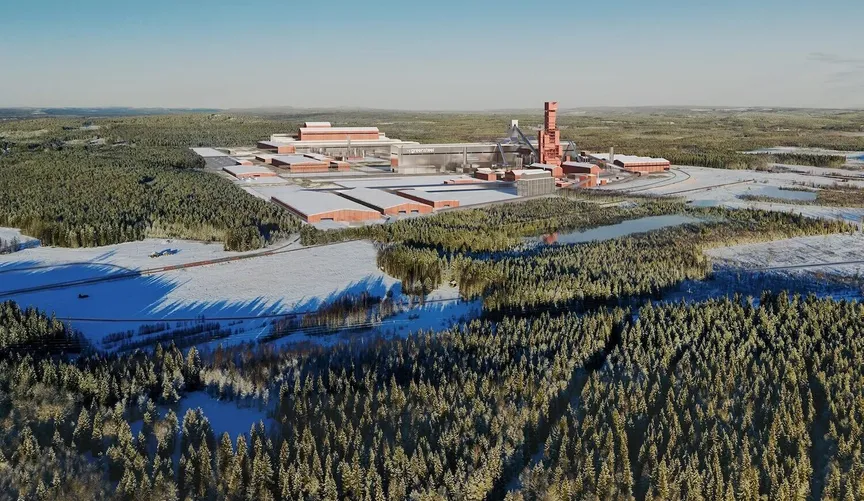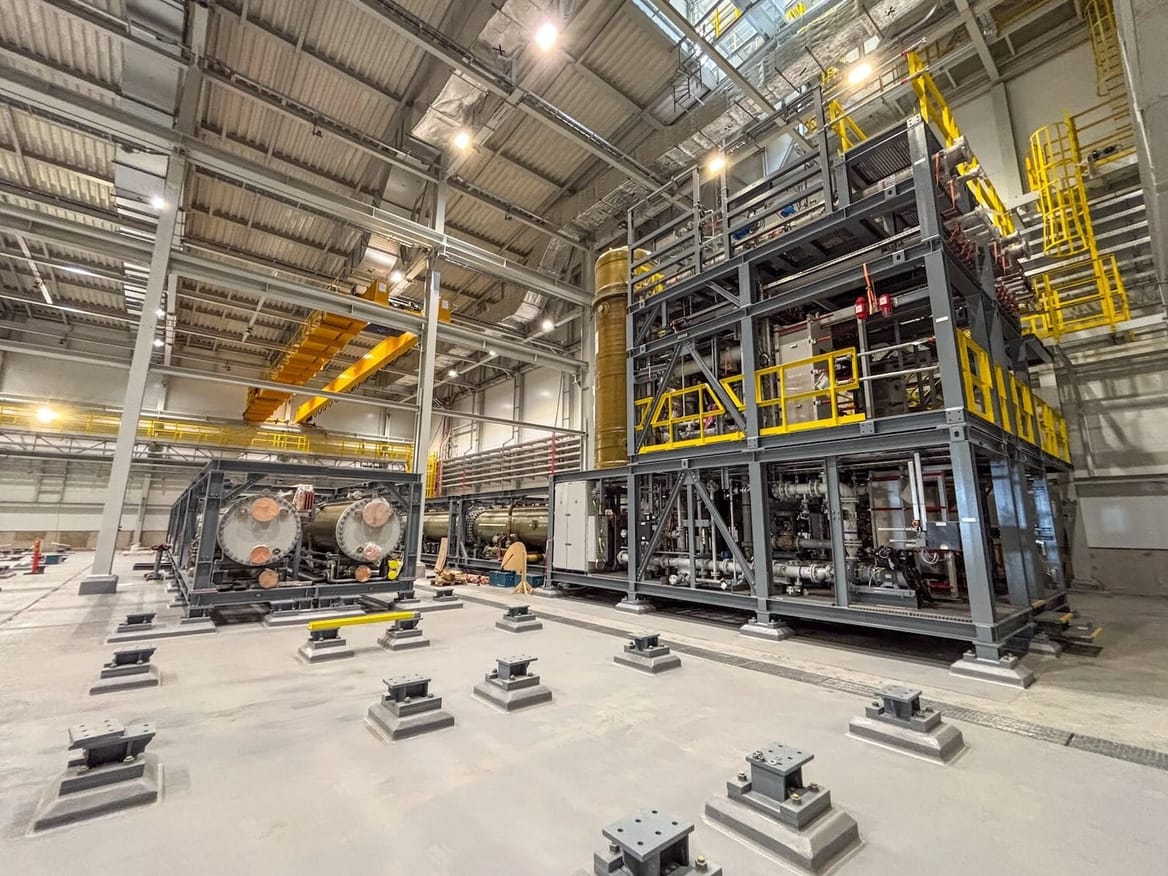
Microsoft says it will get green steel from a first-of-a-kind facility in northern Sweden as the tech giant looks to curb the climate impact of its data center build-out.
This week, Microsoft announced a two-part deal with Stegra (formerly H2 Green Steel), which is building a multibillion-dollar plant set to be completed in late 2026. Instead of relying on traditional coal-based methods, the Swedish project will produce steel using green hydrogen — made from renewable energy sources — and clean electricity.
The first part of Microsoft’s agreement involves actual coils of steel. Because the company doesn’t directly buy construction materials itself, Microsoft has agreed to work with its equipment suppliers to ensure that Stegra’s green steel is used in some of its data center projects in Europe.
The second part of the deal enables Microsoft to claim green credentials for the infrastructure it builds outside of Europe, where Stegra isn’t planning to operate. Under this scheme, Stegra will sell its “near-zero emission” steel into the European market — except that the metal will be sold as if it had an industry-average carbon footprint and without a price premium. Microsoft will then buy “environmental attribute certificates” that represent the emissions reductions provided by Stegra’s product, helping to cover the extra cost of making green steel.
With the certificates, “We aim to signal demand, enable project financing, and accelerate global production,” Melanie Nakagawa, Microsoft’s chief sustainability officer, said in a Sept. 23 press release. Ultimately, she said, “The end game is to source physical materials with the lowest possible CO₂ footprint. Achieving this requires greater volumes of low-carbon steel available in more regions.”
The world produces roughly 2 billion metric tons of steel every year, most of which is made using dirty coal-fueled furnaces. As a result, the industry is responsible for between 7% and 9% of total global carbon emissions.
Microsoft and Stegra didn’t provide details about the financial value or volumes of steel tied to their deal. Johan M. Reunanen, who leads Stegra’s climate impact work, said only that its contract with Microsoft is neither the biggest nor the smallest offtake agreement that the steelmaker has signed since launching in 2021.
“But it’s very strategic for us,” Reunanen told Canary Media during a visit to New York for Climate Week NYC. “It gives Stegra access to a customer that is in data centers, which is a market that we’ll be developing.”

Stegra isn’t the only Swedish steelmaker chasing Big Tech. Last year, the manufacturer SSAB signed an agreement with Amazon Web Services to supply hydrogen-based steel for one of Amazon’s three new data centers in Sweden. SSAB operates the Hybrit pilot plant in Luleå — the world’s first steelmaking facility to use hydrogen at any meaningful scale, though the Stegra project will be the first large-scale plant to use this approach once completed.
Microsoft’s agreement with Stegra arrives at a tenuous time for developers of green hydrogen.
More than a dozen hydrogen projects have been canceled, postponed, or scaled back in recent months owing to soaring production costs and waning demand for the low-carbon and highly expensive fuel, Reuters reported in late July. That includes ArcelorMittal’s hydrogen-based steelmaking initiative in Germany, which the company shelved in June, as well as U.S. green steel projects formerly planned in Ohio and Mississippi.
Stegra, for its part, is seeking to raise additional cash to complete its flagship project in Boden, Sweden, after a government agency denied the company 165 million euros ($193 million) in previously approved grant funding. The Swedish Environmental Protection Agency reportedly objected to the fact that the steel mill will use some fossil gas during a heat-treatment process — though Stegra claims the project could still cut emissions by up to 95% compared to coal-based steelmaking.
Stegra has already secured 6.5 billion euros ($7.6 billion) from private investors for the project, which broke ground in 2022. The company is installing 740 megawatts’ worth of electrolyzers to convert electricity from the region’s hydropower plants and wind farms into hydrogen gas. The hydrogen will be used in the “direct reduction” process to convert iron ore into iron, which will then be transformed into steel using electric arc furnaces.
The sprawling facility, located just south of the Arctic Circle, is expected to produce 2.5 million metric tons of steel by 2028, before ramping up to make 5 million metric tons by 2030. Reunanen said that more than half of the steel produced during the first phase is already covered by offtake contracts with automakers like Mercedes-Benz, Porsche, and Scania, as well major companies including Cargill, Ikea, and now Microsoft.
The tech firm — which previously invested in Stegra through its $1 billion Climate Innovation Fund — is the first company to commit to buying environmental attribute certificates from a steel facility. Microsoft has struck similar deals to help drum up demand for lower-carbon versions of other industrial materials, including with cement startup Fortera and alternative-jet-fuel producers like World Energy.
RMI, a think tank focused on clean energy, said it helped advise Stegra and Microsoft on their deal, and both companies are part of an RMI initiative that’s working to design tools that track, validate, and account for certificates.
“Agreements like this one signal a wider demand pool for lower-carbon steel, expanding the offtake beyond conventional direct steel purchasers and into sectors where steel is a critical yet buried part of the supply chain,” said Claire Dougherty, a senior associate at RMI. She added that the deal “serves as a proof-of-concept for the role that [certificates] can play in getting first-of-a-kind, near-zero steel projects off the ground.”